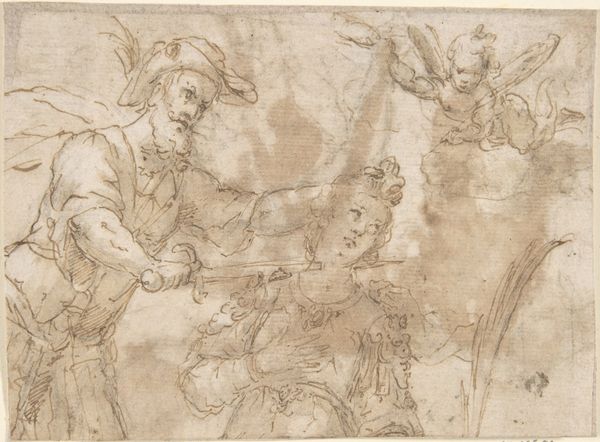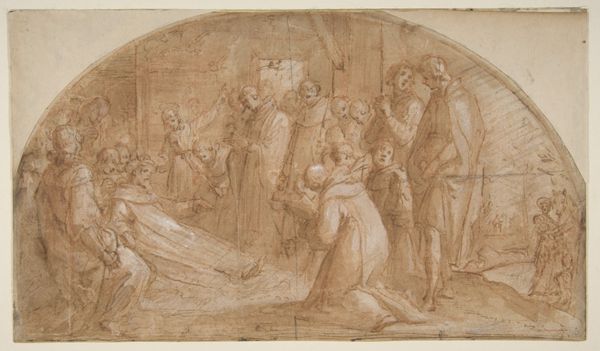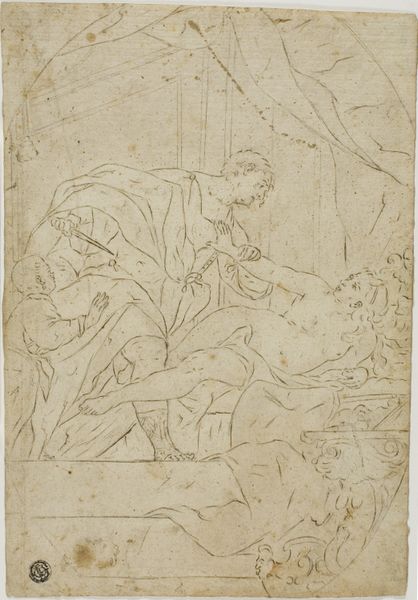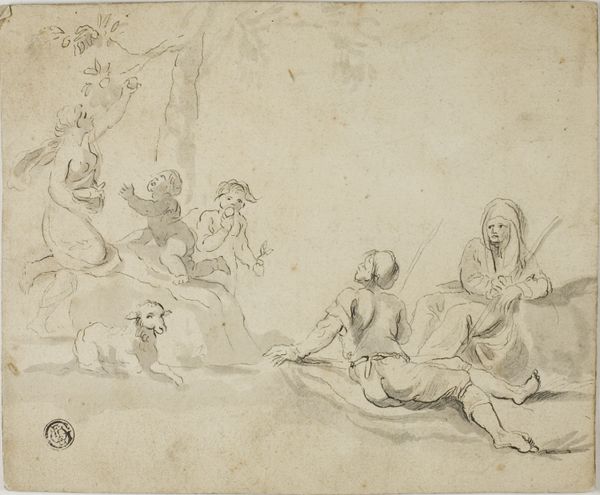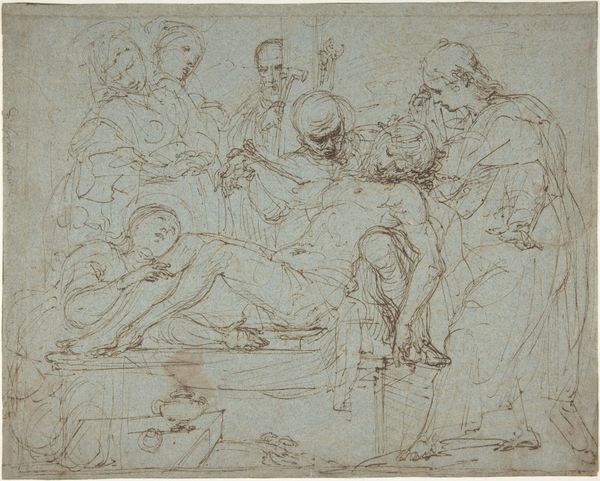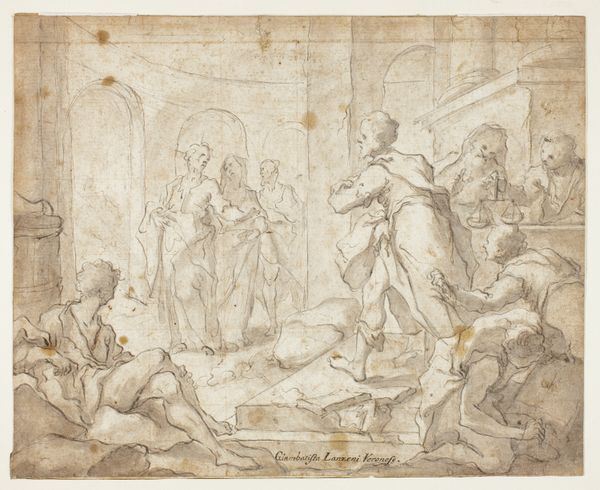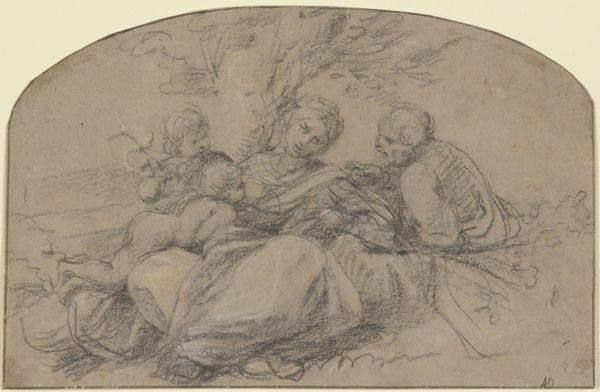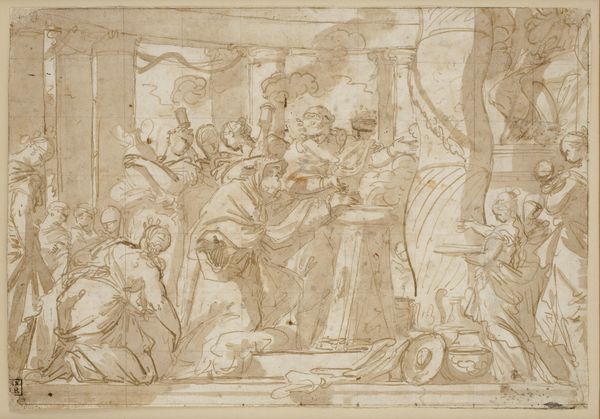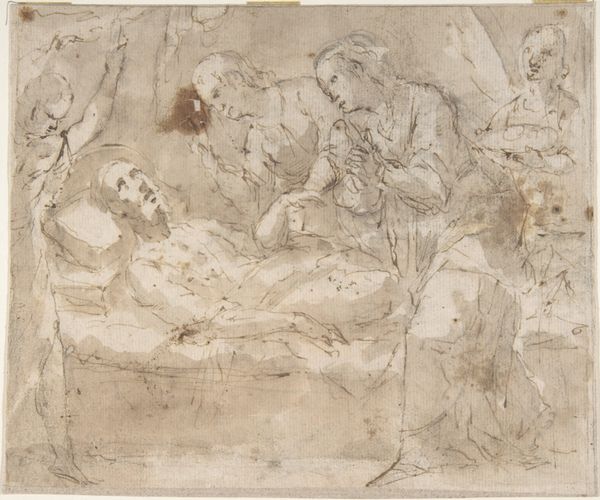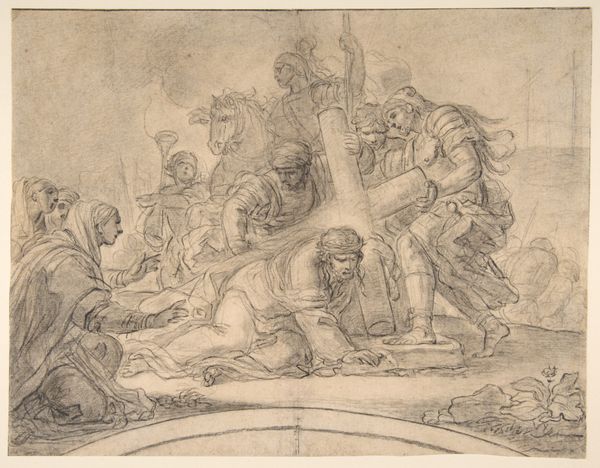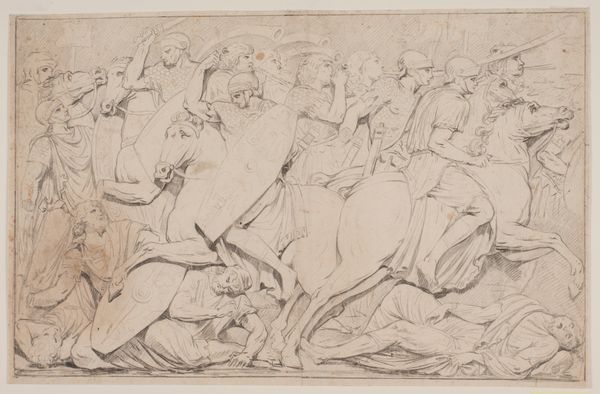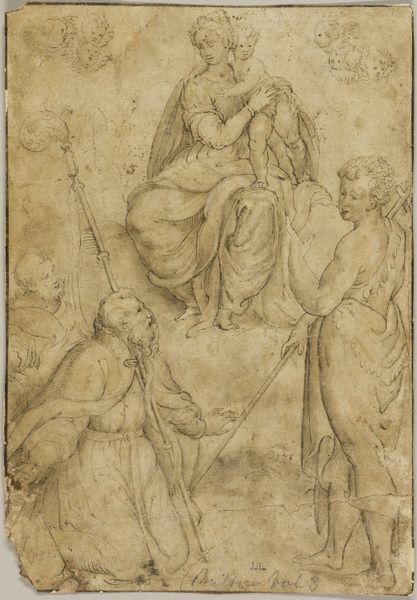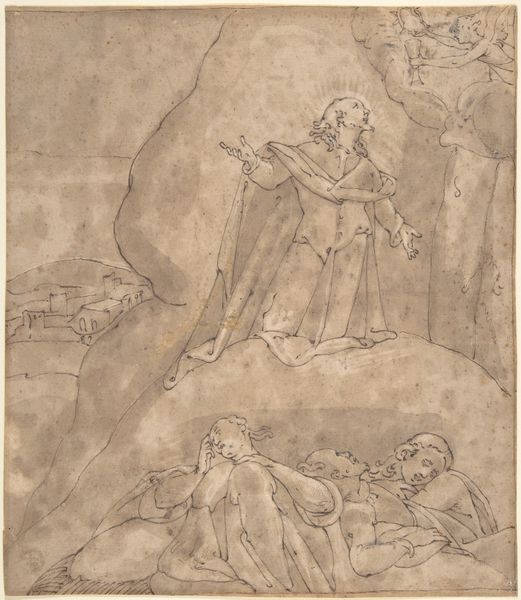
drawing, print, paper, ink, charcoal
#
drawing
#
toned paper
#
narrative-art
# print
#
charcoal drawing
#
figuration
#
paper
#
ink
#
charcoal
#
history-painting
#
italian-renaissance
Dimensions: 9-7/8 x 14-3/16 in. (25.1 x 36 cm)
Copyright: Public Domain
Curator: Looking at this poignant scene rendered in ink, charcoal, and white chalk on toned paper, we see "Pietà with Mary Magdalen and Saint John." It’s believed to be the work of an anonymous artist sometime between 1500 and 1600, placing it within the Italian Renaissance. Editor: My first impression is the palpable grief. The artist masterfully captures the emotional devastation of loss with delicate strokes. The use of toned paper enhances the somber mood, grounding the figures in an ethereal yet melancholic reality. Curator: Absolutely. The composition itself speaks volumes. Notice how the bodies are arranged, almost a collapsed pyramid of anguish. Mary’s outstretched arms create a gesture of supplication or perhaps a desperate plea. It's a visual representation of despair, echoed in the drooping form of Christ. The iconographic representation adheres to typical pietà imagery. Editor: The cultural memory embedded here is heavy. This piece comes to us in an era marked by extreme hierarchical structure and religious control. But do you see the way Mary Magdalene is also rendered? To consider the lives of these women means acknowledging the limits imposed by structures of gendered power. Curator: An important observation. These symbolic roles allowed these figures, often women, an ability to circumvent constraints placed on their behavior. Grief, after all, is an accepted release in many cultures and this very acceptance serves a culturally approved place for the processing of immense trauma. Editor: I appreciate how the anonymous nature of the artist adds another layer of interpretation. Without a known author, the work transcends individual authorship and becomes a communal expression of grief and faith. I wonder who the artist might have been –– perhaps a woman whose voice would be erased, but here is still imbued. Curator: That’s an astute perspective. The lack of a definitive artist allows for broader identification and universality. The symbolism endures. And perhaps anonymity is itself part of the artistic intention. Editor: Ultimately, this piece invites us to confront our own vulnerabilities and our shared human experiences of loss and empathy. To engage with such symbols feels critical, as an opportunity to think collectively on justice, power, and liberation. Curator: Indeed. Whether viewed through the lens of iconography or social critique, "Pietà with Mary Magdalen and Saint John" provides a powerful lens into humanity's enduring relationship with grief, faith, and representation.
Comments
No comments
Be the first to comment and join the conversation on the ultimate creative platform.
